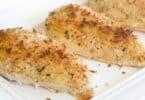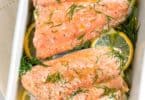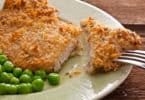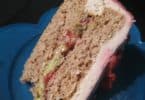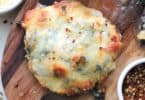One of life’s greatest sensations is walking into someone’s kitchen where a simple chicken is roasting in the oven. The ambient warmth and tantalizing fragrance are a perfect backdrop for fostering friendship and camaraderie…who could pick a fight in such a scene?
Years ago, before fast food and microwaves, young brides cut their culinary teeth on preparing roast chicken, usually aided by family recipes and overseen by well-meaning mothers-in-law.
Nowadays, with the exception of newer, more efficient gadgets, not much has changed in the roast chicken department. It’s still an economical meal and a good-sized bird can easily transform into three more lifetimes. Whole chickens are the cheapest meat protein available. All you need is proper seasoning and a good roasting pan.
Familiarize yourself with the fowl lifespan: age features heavily in roasting preparation and timing. The very youngest whole birds are fryers, followed closely by broilers. As their names suggest, they are great for deep frying and grilling/broiling. Usually butchered at 3 months, they weigh an average of 3-3 ½ lbs. Since they haven‘t developed many muscles, their flesh is very tender and mild-flavored. They’re perfectly suited for roasting, but will require less time to bake , and you will need a few if you have lots of mouths to feed.
Roasters appear next on the time-line, usually butchered at four months and weighing 5-7 lbs. Like their younger cousins, roasters have not become overly-muscled, so they remain tender and flavorful. One 7 lb. roaster will serve a family of four with plenty of leftovers for sandwiches, chicken pie and a good chicken soup.
Capons are seen occasionally. These are older, castrated roosters dressing out at 6-7 lbs. These poor fellows have developed greater body mass and have a higher fat content, but this means more flavor. Being more muscular requires longer, slower cooking, but a capon produces a wonderfully flavorful product.
At the end of the line you will find the old hens. These gals are 1-2 years old and are 7-10 pounds. They’re generally tough, so stewing, braising and slow-cooking is the way to handle them.
Choose a plump chicken with pearly skin. Look for an asymmetrical shape (no broken arms or legs). Whether you choose organic, free-range or natural is your choice, but remember that many ‘free-range’ and ‘all-natural’ proclamations are misleading. If you’re committed to truly organic products, buy from reputable sources.
To roast chicken:
- 7 lb. roaster, at room temperature
- ¼ stick butter, softened
- 2 ribs celery, roughly chopped
- 1 onion, roughly chopped
- 4 carrots, roughly chopped
- 6 cloves garlic
- Several sprigs each fresh thyme, rosemary and tarragon, bay leaves, divided
- Salt/pepper
- White wine or chicken stock, about 1 ½ cups
- Aluminum foil
Preheat your oven to 350 degrees. Wash the bird and pat dry with paper towels. Rub the chicken with softened butter and place into a roomy roasting pan. Roughly chop celery, onions, carrots, several cloves of garlic and strew around the chicken. Add giblets if desired. Place half of herbs into cavity, strew the rest on vegetables. Salt and pepper all. Pour wine/stock over. Cover with foil tent and roast approx. 1- 1 ½ hrs.
Baste frequently. Remove tent for last half hour of roasting to allow skin to brown.
Chicken will be done when a meat thermometer in thigh registers 165 degrees, but many people follow Julia Child’s advice: “When you can shake hands with your chicken, it’s done.” (The leg should move freely in its joint.)
So treat your loved-ones to some down-home comfort food and roast a chicken …but don’t be surprised if the neighbors show up!
<>


